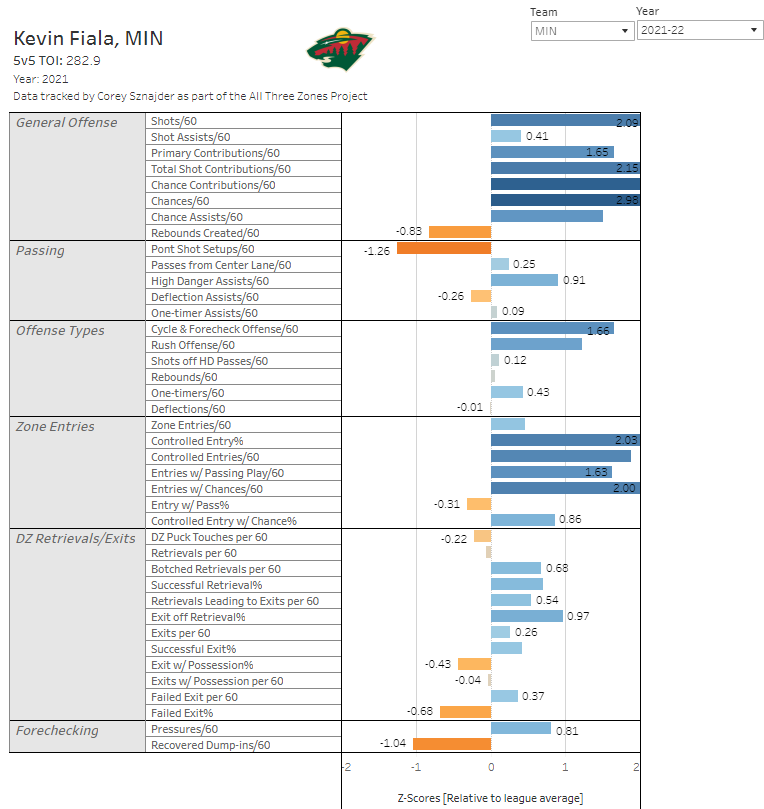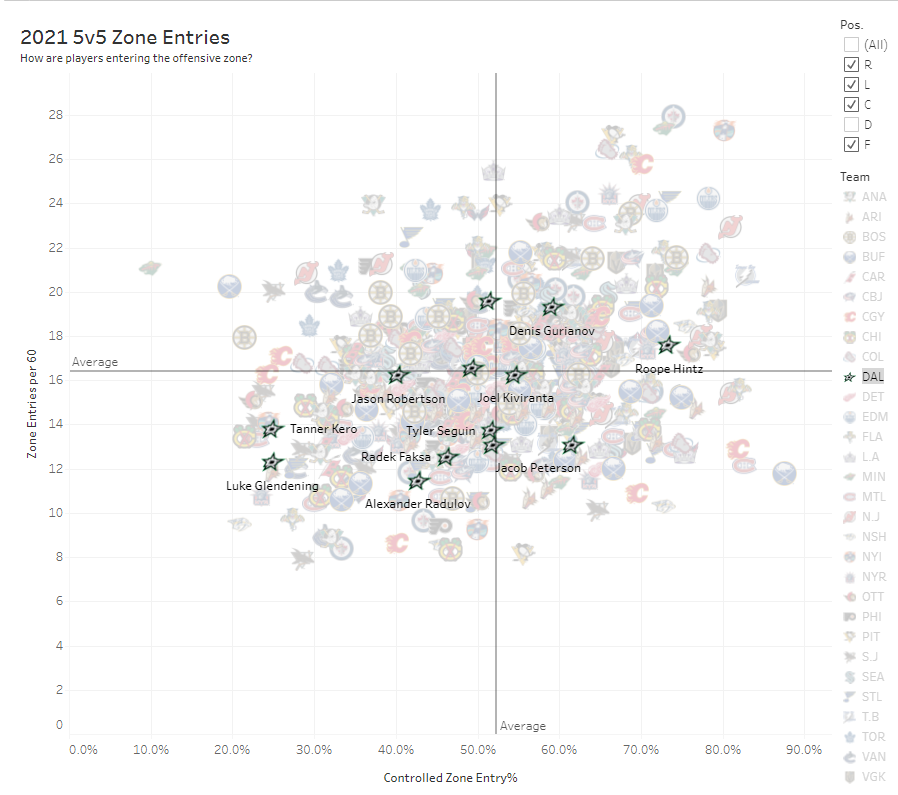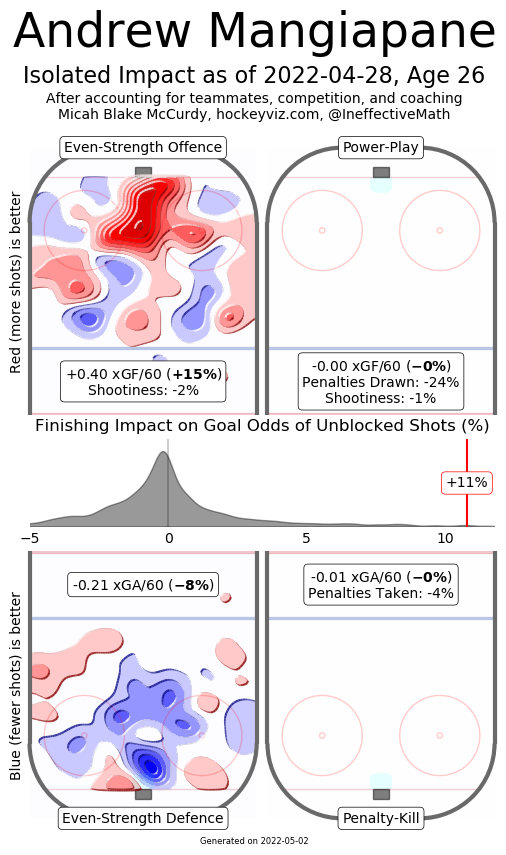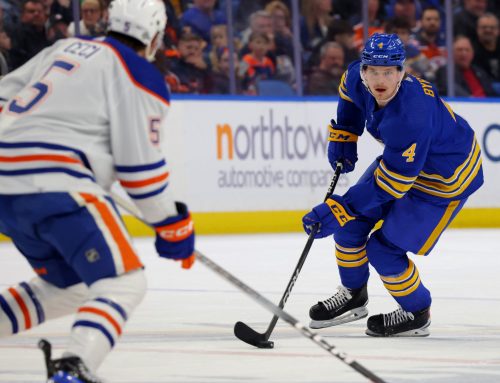Aside from some injuries, the big news from early on Monday, relating to the NHL playoffs, was that Dylan Holloway would be making his debut with the Oilers. The team's top prospect forward was inserted for a couple reasons, namely being down 3-0 in the series and without the suspended Evander Kane. He started the game on the second line with Nugent-Hopkins. May as well pull all the tricks out of the bag when your back is against the wall. His Dobber Prospects profile can be viewed here.
The Oilers and Avalanche just can't seem to have a normal game. In Game 4 of the Western Conference Final, Edmonton had a 3-1 lead heading to the third period and looked to be extending the series. And then things got fun.
Devon Toews scored very early in the third period, a short-handed tally, to get to 3-2. Zach Hyman replied about three minutes later to give Edmonton their two-goal lead back. Then, in a span of about six minutes, Colorado reeled off three straight goals, one each from Gabriel Landeskog, Nathan MacKinnon, and Mikko Rantanen, to give themselves a 5-4 lead with five minutes left. HOWEVER, about two minutes later, Zack Kassian slammed home a rebound to tie the game 5-5 with over three minutes left in regulation. That's where things stood, heading to overtime for the first time in the series.
My description really doesn't do it justice. We had giveaways, goalie gaffes, net-front scrambles, and beautiful rushes all formulating the six-goal third period. By the end of 60 minutes, Leon Draisaitl had four assists, Hyman a pair of tallies, and Connor McDavid had a goal and two assists. Meanwhile, Cale Makar was an absolute monster for Colorado, logging over 28 minutes, and putting up a marker of his own with three helpers to boot. It was just a crazy final 20 minutes of the game, and set us up for a win-or-go-home overtime for Edmonton.
As expected, it didn't take long to settle things in OT. Deadline pickup Artturi Lehkonen deflected a point shot on Mike Smith, and fired home the rebound to send Colorado to the Cup Final for the first time since their last Stanley Cup win in 2001:
Lehkonen finished the game with a goal and two assists, giving up 11 points in 14 postseason games so far. He was also the player that sent Montreal to the Cup Final last season, scoring in overtime against Vegas. As a Habs fan, I'm still furious the team traded him, but it's nice to see him succeed nonetheless.
We will have more on the Oilers and their season in future Ramblings and articles.
*
The Bruins announced they were relieving coach Bruce Cassidy of his duties with a replacement to come after a search. I wrote about it last night so for thoughts on this, go read that.
*
We got an update on the status of Nazem Kadri before Game 4:
Not really great news for Kadri or the Avalanche at this point of the season.
*
Montreal extended defenceman Chris Wideman:
He had a career year offensively with 27 points in 64 games. We'll see how they fill out the blue line, but he could be the PP1 defenceman again in 2022-23. A name to keep in mind for deeper multi-cat leagues, especially cap formats where he signed for under $800K per year.
*
There are a lot of teams with some key decisions to make this offseason with regards to some of their restricted free agents. Whether it be a cap crunch, a down season from a potential cornerstone player, or a superlative season, what to do with RFAs isn't always so neat and tidy. Some players could be a big piece of the franchise for a decade to come, or they could decline in play as they transition to their late-20s, or they could bring a good return in a trade. Sometimes, the decision is clear-cut – like Colorado paying Cale Makar a fortune to stick around through most of his 20s – and sometimes it's not.
With that in mind, let's look at some key RFAs this summer, the season they had, the future they could hold, and what their respective franchises could do. Data from Natural Stat Trick or our Frozen Tools, unless otherwise indicated, and the cap information is from Cap Friendly.
One of the big RFA decisions this summer is what Minnesota will do with Kevin Fiala. Because of a pair of bought-out contracts, the Wild have significant cap crunches for the next three seasons. With over $7M in cap space and no major signings to make – backup goalie, a couple depth contracts – it wouldn't take much finagling to get Fiala signed short-term and staying under the cap. It would handcuff their roster flexibility even further, but it may be necessary.
The reason it's necessary is just how good Fiala is. He had a whopping 85 points in 2022-23, skating 17:49 a night. Over the last three seasons, he has managed 2.66 points/60 minutes at 5-on-5, which is tied with Mark Stone for 16th in the league. He is also inside the top-40 in shot rate in that span, so he's really bringing it across the board for even-strength production. The question is, how does he do it and is it sustainable?
The short answer is that Fiala does almost everything. He isn't a particularly strong forechecker, but he's phenomenal in transition – both exiting his zone and entering the offensive zone – and he's very good at playmaking in the right situations i.e. finding guys in dangerous positions. From Corey Sznajder's tracking data, here was Fiala in 2021-22 among various tracking categories:

I won't keep posting charts, but those look very similar to the COVID-shortened 2021 season, and a few seasons before that, even going back to Nashville. He excels in most offensive areas, and this was the year it all came together for him, points-wise. He's a genuine first-line scoring winger skating on the second line of a team with many good flanks.
Whether he can post 80+ points again is another issue. He had career-highs in many areas – 5-on-5 shooting percentage, 5-on-5 team on-ice shooting percentage, 5-on-5 team on-ice goals – and that could be due to the NHL's increased scoring environment. It could also be a sign of a downturn. Not that he's going to crash to a 50-point player or anything, but he doesn't bring a lot of hits. A forward that doesn't hit a lot that goes from 85 points to 70 points is a big drop in multi-cat fantasy leagues.
Part of it, if he returns to Minnesota, could hinge on his PP role. The team largely stuck with the top line, plus a defenceman, plus a fourth forward as their top PP setup. That role fluctuated at times from Fiala to Matt Boldy to Joel Eriksson Ek, and back again. Boldy looks to be an excellent offensive player, and it's not unreasonable to think he gets top PP minutes, or Eriksson Ek, even if Fiala is back. I don't think that's how it would go, necessarily, but it's not unthinkable. Fiala wasn't reliant on PP production – just 20% of his points were with the man advantage – but it's a nice cushion to have.
Long story short, Fiala has been an excellent offensive player for several years and this was the season the pieces fell into place. He's earned a big contract, though Minnesota might not be the team to give it to him. There shouldn't be much concern about a team giving him a 7-year contract and having him live up to it, as long as he stays healthy. This will be a fascinating story to follow this offseason.
It was a very tough season for the soon-to-be 27-year-old winger. He was one RFA season left, then becomes unrestricted, and he had a career-high in games played (78) with a career-low in goals (15) and points (32). So, what happened?
What we need to dispel first is that he's not really a great all-around offensive player; this isn't Kevin Fiala in Nashville who is showing all the flashes of what a high-end winger needs to be to produce high-end point totals, but not quite bringing it all together. By the same tracking data, going back a couple seasons, Kubalik is well below average in things like zone entries with control, shot assists (passes leading to team shots), high-danger assists (cross-seam passes and the like), zone exits with control, and so on. The two areas he generally excels are his shot rate and getting himself in dangerous spots to take those shots. To do that, he needs to play with very talented wingers, something he didn't do in 2021-22, skating roughly 11% of his 5-on-5 TOI with Alex DeBrincat, 15% with Patrick Kane, and 14.5% with Dylan Strome. Chicago is not deep up front, so playing largely away from their top-end wingers and more with guys like Philipp Kurashev, Kirby Dach, and a declining Jonathan Toews did not put him in a position to succeed.
With all that said, he is still top-25 in goals/60 minutes at 5-on-5 over the last three seasons and is decent defensively. He won't create much for his teammates, but if his teammates can create for him, he can finish. He is also better on the power play than he gets credit for, as evidenced by his impacts, via Evolving Hockey, over the last three seasons:

Chicago has the space for a low-dollar, short-term deal for him if they choose to, using him as a top-6 stop-gap winger until the rebuild they'll have to go through is well underway. Or they could trade him for a pick and just move on. I don't think there's a 70-point winger waiting to break out here, but he can be a 20- to 25-goal ancillary winger somewhere else. We'll see what the team decides to do this summer but my guess is they try it again for at least one more season.
Dallas's young winger is kind of similar to Kubalik in that he had one great goal-scoring season but that has been followed by a couple of disappointing campaigns. He also loves to shoot the puck, like Kubalik does, but that's where the comparisons end.
For any of his faults, Gurianov is better in transition than he gets credit for. This past season, he had the third-highest percentage of zone entries with control among Dallas forwards (again from Sznajder's Patreon):

It isn't a one-off, either. He led the team in carry-in percentage in his rookie season in 2019-20 and again in the shortened 2021 campaign (slightly ahead of Roope Hintz in both instances). He is not a strong defensive player, and I wonder how it has hurt his standing in Dallas. That is a team that preaches defence first and tends to grind games down. A shooter who is good in offensive transition but is not strong in his own zone will not flourish in that type of environment unless they're a very high-end player, like Jason Robertson. Under a different coaching system, there really could be a 25-goal, 55-point winger waiting to break out. With decent hit and shot rates, he could make a good depth selection in multi-cat fantasy drafts.
The questions are A) do they bring him back, and B) can he succeed under Rick Bowness? Both of those questions are not answerable today, though I'm not sure he can reach his full potential under this particular Dallas coaching regime. I have a lot of belief in him to turn into a good-not-great scorer, but with Dallas's forward depth issues, it may not happen in 2022-23.
*EDIT: As has been pointed out to me, Rick Bowness is no longer the Stars coach. Looking at when that happened, I was away on vacation and completely missed that he had been let go. Let’s hope they bring in a coach that is the complete opposite of him.
This is a very interesting case. Calgary's 26-year-old winger is coming off a 35-goal season, having scored 43 times in his previous 178 games. We can point to his 18.9% shooting, which is high, but he's also shooting 17.3% over his last 250 regular season games. Shooting just that four-year average would have still resulted in over 30 goals. Calgary is also in a position where they have just six forward signed for next season (plus any rookies that may crack the roster). They have $27M in cap space but Mangiapane, Matthew Tkachuk, and Oliver Kylington are RFAs with Johnny Gaudreau and Calle Jarnkrok as UFAs. They have 12 guys signed for 2021-22 (again, plus any rookies) so they have to fill out nearly half their roster, with some big-ticket players to sign. It doesn't seem like everyone will be coming back and that leaves them with big decisions to make.
But he's not just a shooter. He has three straight seasons of being above the league average in zone entries with control. He also has three straight seasons of being above average (and a couple seasons being well above average) in high-danger passes; things like offensive zone seam passes, which lead to high-quality shots for teammates. He's also not just a transition/playmaking forward; by the same Sznajder data set, he has two straight seasons of being well above average in recovering dump-ins, so he’s good at the grinding game as well. He is just a very well-rounded forward at both ends of the ice, which is why his Hockey Viz impacts look like this (positive in the offensive zone is good, negative in the defensive zone is similarly good):

Beyond just the excellent 5-on-5 play, Mangiapane has positive power-play impacts for his career, per Evolving Hockey. For reference, he has the same expected goals impact as Nico Hischier and Jason Robertson over the last three seasons. In just a 52-minute sample, the Calgary top PP unit scores more goals, and generates more expected goals, with him next to Gaudreau than when he's not. That he never really got an extended run on the Calgary top PP unit – 17 PP points in his last 206 regular season games – is a big reason why his point totals have never looked strong, despite great goal scoring rates (top-10 in the league at 5-on-5 over the last three years, tied with Kyle Connor and Nikita Kucherov). It also doesn't help that he's been largely kept away from Gaudreau, the team's best playmaker. It is kind of the same problem Kubalik has in Chicago.
All that said, I am a big believer in Mangiapane's upside. If he can skate regularly with good scorers, and crack the top PP unit, he has 30-goal, 70-point potential. This could be Calgary's Kevin Fiala rounding into form and, with good shot and hit rates, he has multi-cat appeal.
Mangiapane being 26 years old means any sort of longer-term contract has Calgary buying UFA years, and that can get expensive. For reference, Josh Anderson signed for seven years at $5.5M in 2020 starting in his age-26 season, and Anthony Mantha got four years at $5.7M a season at the same age. If they sign him for six or seven years, the cap hit probably starts with a five. If they do that, it's hard to bring back both Tkachuk and Gaudreau. They could bridge him and walk him to free agency in an effort to keep everyone.
Regardless of what they do, Mangiapane should be a guy they keep long-term. Low TOI and a lack of PP opportunity has kept his point totals relatively low, and the right deployment could see him explode offensively. I do believe he can be nearly as productive as the aforementioned Fiala, while adding very good defensive ability. That is worth keeping around for years.
One Comment
Leave A Comment
You must be logged in to post a comment.





 CHI
CHI MTL
MTL N.J
N.J CBJ
CBJ BOS
BOS PIT
PIT DET
DET ANA
ANA L.A
L.A COL
COL

Rick Bowness isnt dallas coach anymore